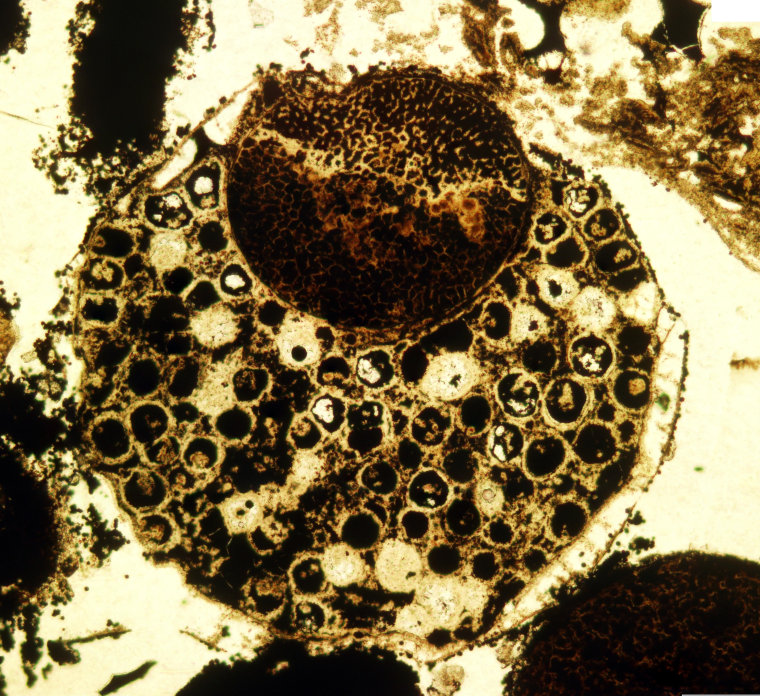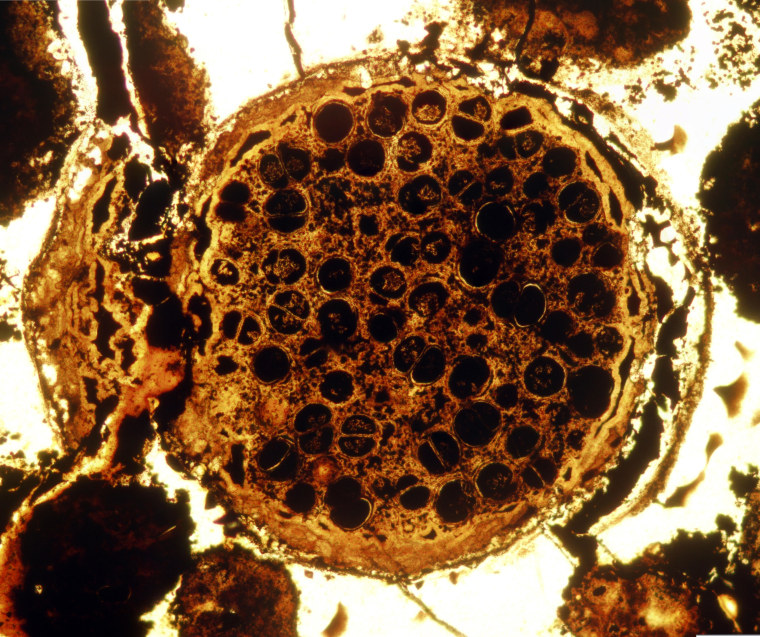A series of mysterious spherical fossils found in southern China may be remnants of some of the world's earliest animals.
A new study finds that these controversial fossils are not likely to be bacteria or single-celled protists; their cells, preserved for more than 600 million years in rock, are too complex and differentiated. Instead, the fossils may be multicellular algae, or even the embryos of ancient animals.
The bizarre fossils, known as Megasphaera, come from a rock layer in southern China called the Doushantuo Formation. Virginia Tech geobiologist Shuhai Xiao first studied Megasphaera specimens in 1998 and suspected they might be animal embryos.
Each fossil measures 0.03 inches (0.7 millimeters) or so across, and comes from what would have been a shallow marine environment. No adult animals that might have produced these embryos have ever been found, leaving the identity of the fossils open to scrutiny. Previous Megasphaera fossils studied have been extracted from a gray rock in the Doushantuo Formation, Xiao told Live Science. Now, he and his team have succeeded in extracting more difficult-to-see fossils from the formation's black rocks.

By slicing the rocks ultrathin, the researchers were able to shine light through the fossils to see the structures inside, just like stained glass. They observed multiple cells, cleaved together in spherical clusters. The cells were different from one another in shape and size, suggesting that they developed into different tissue types and presumably had different cellular functions, Xiao said.
"That is a telling sign of the complexity of multicellular organisms that you don't find in bacteria or protists," he said.
Among the cells were clusters that contained smaller cells than the rest of the fossil. Because of their nestled appearance, the researchers dubbed these clusters "matryoshkas," after the word for Russian nesting dolls. They suspect the matryoshkas may be reproductive cells.
The fossils may represent the transition between single-celled life and multicellular animals, Xiao said. However, their anatomy is also consistent with algal life forms, meaning the fossils could be plantlike instead.
The findings were published online Wednesday in the journal Nature.
— Stephanie Pappas, LiveScience
This is a condensed version of a report from LiveScience. Read the full report. Follow Stephanie Pappas on Twitter and Google+. Follow LiveScience on Twitter, Facebook and Google+.
